You might not realize that eastern Colorado’s grasslands receive only 12-16 inches of annual precipitation, creating conditions similar to those found in parts of Nevada. This semi-arid environment actually supports over 200 native plant species that’ve adapted remarkable survival strategies over thousands of years. While most gardeners struggle with water restrictions and failed landscaping attempts, there’s a hidden arsenal of indigenous plants waiting in your backyard that’ll transform your property into a thriving, low-maintenance ecosystem.
Contents
- 1 Eastern Colorado’s Arid Prairie Environment
- 2 Drought-Tolerant Wildflowers for Eastern Colorado
- 3 Hardy Native Trees Selections
- 4 Resilient Native Shrubs
- 5 Selecting the Right Native Plants for Your Garden
- 6 Frequently Asked Questions
- 6.1 When Is the Best Time to Plant Native Species in Eastern Colorado?
- 6.2 How Much Water Do Newly Planted Native Plants Need During Establishment?
- 6.3 Where Can I Purchase Native Plant Seeds or Seedlings Locally?
- 6.4 Do Native Plants Require Special Soil Amendments or Fertilizers?
- 6.5 How Do I Protect Young Native Plants From Wildlife Damage?
Eastern Colorado’s Arid Prairie Environment
When you think of Colorado, you’ll probably picture snow-capped mountains and dense forests, but the eastern two-thirds of the state tells a completely different story. Here, you’ll find rolling plains receiving less than 12 inches of rainfall annually, creating challenging conditions for plant life.
The arid soil supports shortgrass prairie ecosystems where buffalo grass and blue gramma have mastered moisture conservation. These hardy plants form carpet-like ground cover, thriving despite low humidity and intense sunshine. These grasses provide essential habitat for unique wildlife species like the Thick-billed Longspur, which relies on the short, carpet-like conditions for nesting and foraging. Rocky substrates challenge vegetation further, supporting only dwarf plants and sparse growth in this semi-arid landscape.
Drought-Tolerant Wildflowers for Eastern Colorado
Eastern Colorado’s arid climate demands hardy native wildflowers that thrive with minimal water. These drought-tolerant species offer beauty, support pollinators, and create sustainable landscapes perfectly suited to local conditions. In the plains region, late spring brings forth vibrant blooms that have adapted to withstand the challenging environmental conditions of this semi-arid landscape.
Purple Prairie Clover
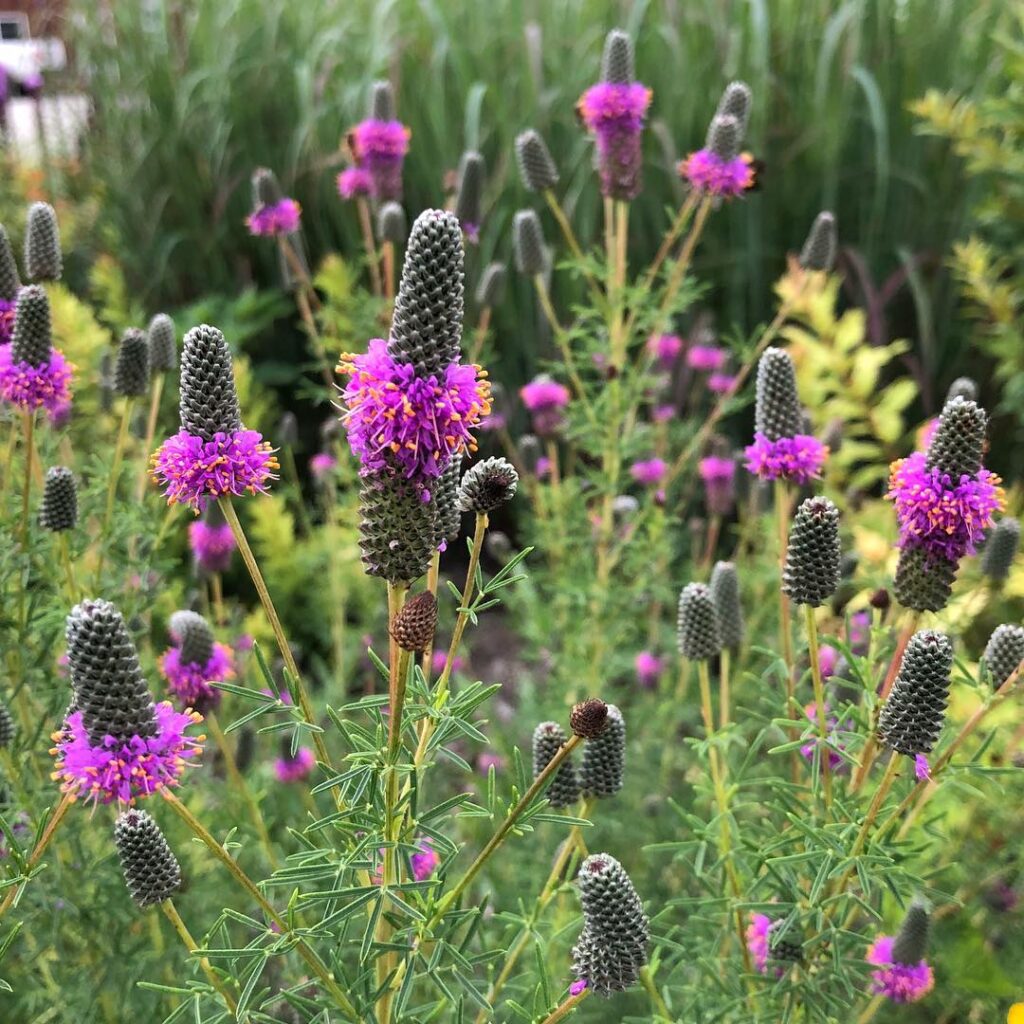
Purple Prairie Clover is a resilient native wildflower perfectly suited for Eastern Colorado’s challenging climate. This drought-tolerant legume produces striking red-violet, cone-shaped flower clusters with golden-orange anthers throughout the summer months. Growing 18-24 inches tall with an upright, bushy habit, it thrives in waterwise landscapes and prairie restoration projects.
As a nitrogen-fixing plant, Purple Prairie Clover improves soil fertility while supporting native pollinators and butterfly larvae. Its deep root system enables exceptional drought tolerance and soil stabilization. This low-maintenance wildflower adds vibrant color and fine texture to rock gardens, slopes, and naturalistic plantings while remaining deer-resistant. The seeds provide important food for songbirds, making it valuable for wildlife habitat enhancement.
- Hardiness: USDA zones 3-9
- Light: Full sun
- Water: Low; drought tolerant once established
- Soil: Tolerates various soils including clay; prefers well-drained
- Fertilizer: None needed; nitrogen-fixing legume
- Pest/Disease Resistance: Excellent; rarely affected
- Growth Rate: Moderate establishment with deep root development
Blanket Flower (Gaillardia)
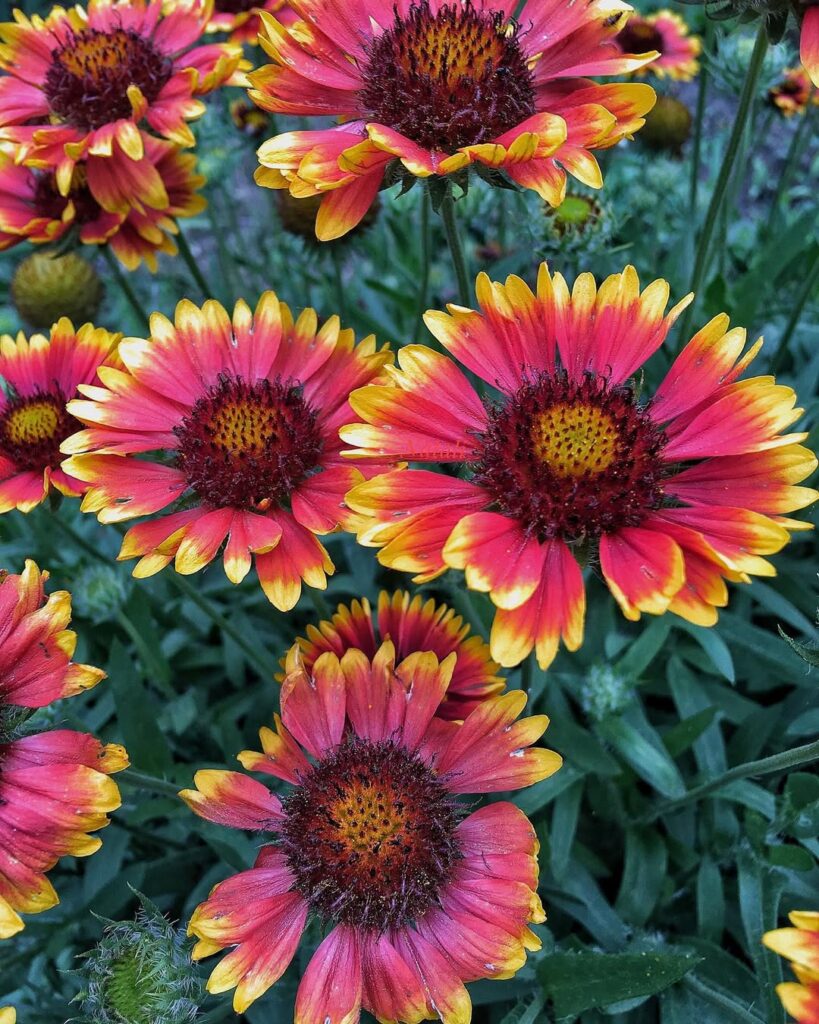
Blanket Flower (Gaillardia) is a stunning drought-tolerant wildflower native to Colorado’s prairies and mountain foothills. This hardy perennial produces vibrant daisy-like blooms with reddish-brown centers and yellow or yellow-red bicolor petals from mid-summer through August. Growing 18-24 inches tall and wide with fuzzy light green foliage, it creates eye-catching displays in naturalistic gardens.
Blanket Flower thrives in well-drained soils and open spaces, making it perfect for xeriscape gardens and prairie restorations. Its exceptional drought tolerance and ability to reseed readily help establish sustainable wildflower populations. The plant provides valuable nectar for pollinators while producing decorative seedheads that shift through multiple colors as they mature. Individual plants are short-lived, but the species persists through natural reseeding in suitable conditions.
- Hardiness: USDA zones 3-8, tolerates elevations up to 8,500 feet
- Light: Full sun for best flowering; tolerates part shade with reduced blooms
- Water: Highly drought tolerant; adapted to 10-30 inches annual precipitation
- Soil: Well-drained soils from sand to loam; tolerates calcareous and circumneutral soils (pH 6.8-7.2)
- Fertilizer: Avoid over-fertilizing; rich soils cause floppy growth and reduced flowering
- Pest/Disease Resistance: Good resistance; susceptible to root rot in poorly drained soils
- Growth Rate: Moderate; capable of rapid colonization of disturbed sites
Rocky Mountain Penstemon
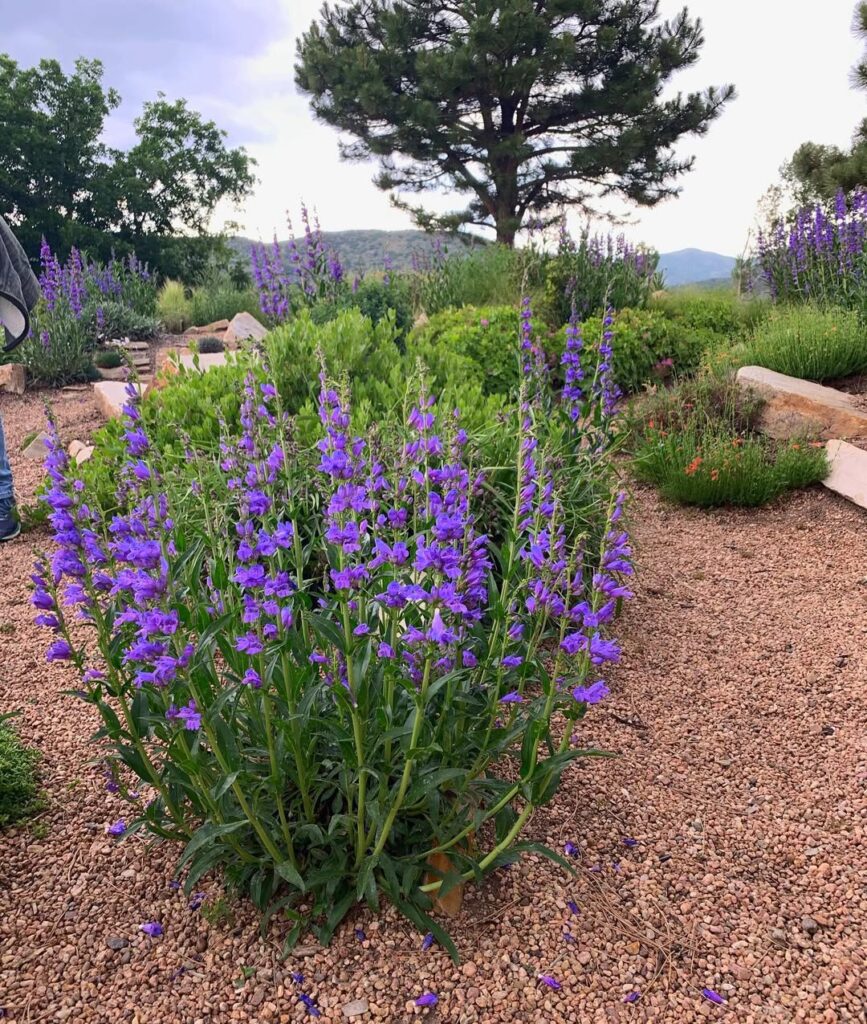
Rocky Mountain Penstemon (Penstemon strictus) is an exceptional native wildflower that brings vibrant blue to violet tubular blooms to Eastern Colorado gardens from late spring through early summer. This evergreen herbaceous perennial forms attractive low mats of foliage with flower stalks reaching 1-3 feet tall, creating striking vertical interest in the landscape.
Perfectly adapted to high-elevation conditions, this drought-tolerant native thrives in Eastern Colorado’s challenging climate while providing essential habitat for hummingbirds, native bees, and other pollinators. Its versatility makes it ideal for xeriscape gardens, rock gardens, and naturalized areas where it serves as both ornamental flowering plant and practical evergreen groundcover. The plant spreads naturally through underground stolons to establish dense colonies over time.
- Hardiness: USDA Zone 2-8, exceptionally cold-tolerant
- Light: Full sun (minimum 6 hours) for best flowering and upright growth
- Water: Low water requirements once established; drought-tolerant but adapts to moderate moisture
- Soil: Well-drained sandy or rocky soils preferred; tolerates heavy soils better than most penstemons
- Fertilizer: No supplemental fertilization needed; thrives in native soil conditions
- Pest/Disease Resistance: Rabbit resistant; generally free of significant pest and disease issues
- Growth Rate: Moderate; establishes quickly and spreads to form groundcover mats
Wild Bergamot (Monarda)
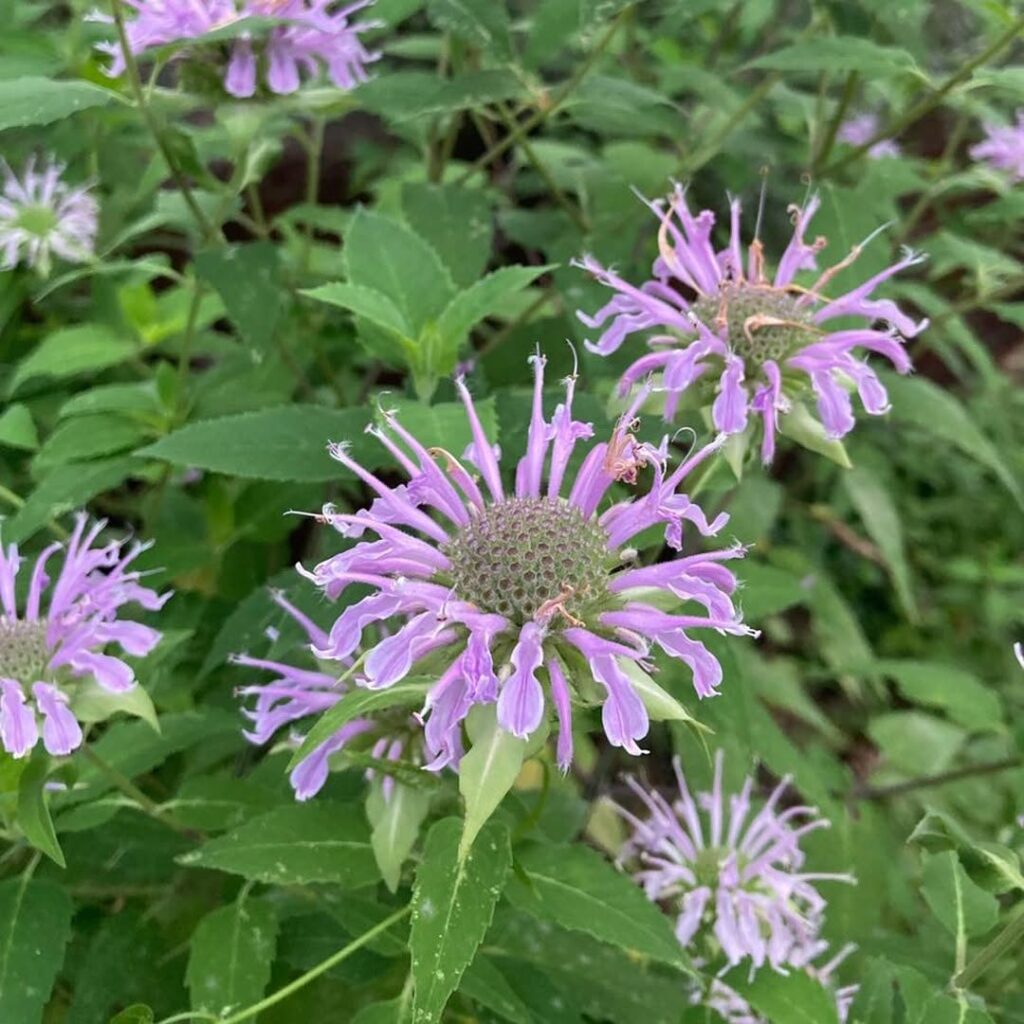
Wild Bergamot (Monarda fistulosa) is a native member of the mint family that serves as a true pollinator magnet in Eastern Colorado’s landscapes. This hardy wildflower produces distinctive clusters of lavender, pink, or white flowers that resemble ragged pompoms, creating exuberant bursts of color across prairies and meadows from summer through late summer.
Growing 2-4 feet tall with hollow, open-branched stems, Wild Bergamot demonstrates exceptional adaptability to Colorado’s challenging climate conditions. As a pioneer species, it’s among the first plants to establish in disturbed areas and functions as a crucial ecosystem anchor, supporting butterflies, bees, and other wildlife while providing gentle fragrance to garden spaces. The plant spreads naturally via underground rhizomes, gradually forming established clumps that increase in size over time.
- Hardiness: Extremely hardy, wide climate adaptability, tolerates harsh conditions
- Light: Full sun preferred for ideal performance
- Water: Drought-tolerant, thrives in dryish to moderately moist conditions
- Soil: Adaptable to various soil types, tolerates dry rocky conditions
- Fertilizer: Low maintenance, typically requires no supplemental fertilization
- Pest/Disease Resistance: Resistant to powdery mildew, notable black walnut tolerance
- Growth Rate: Moderate, forms clumps, space plants 1-2 feet apart
Wild Prairie Rose
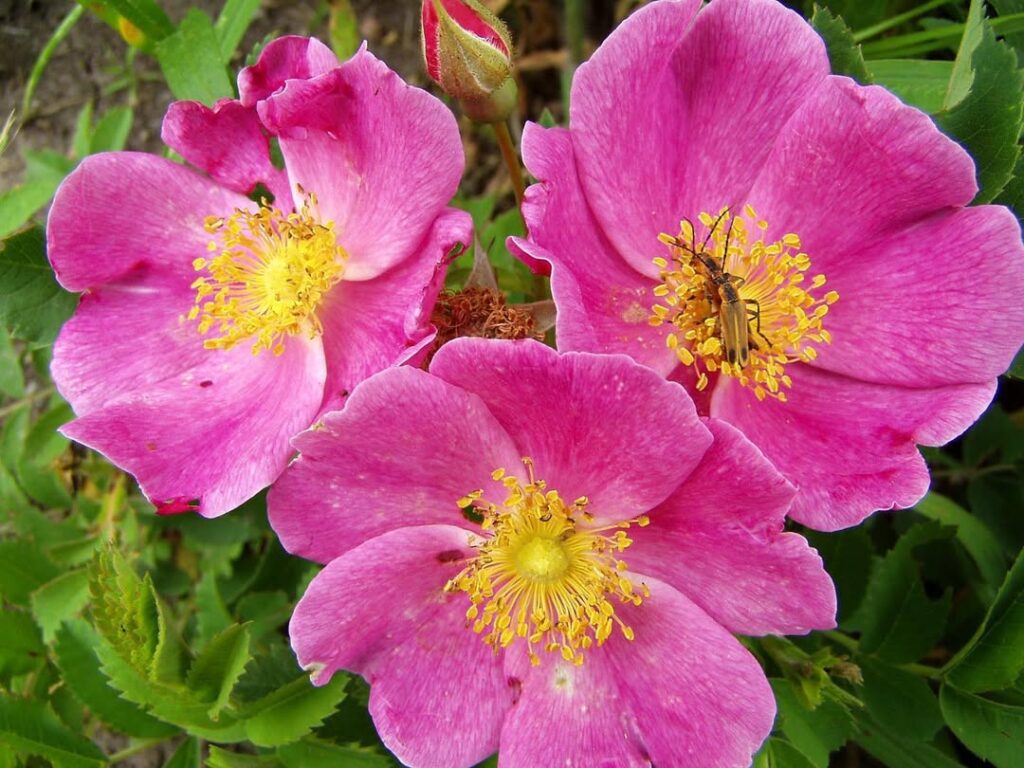
The Wild Prairie Rose (Rosa arkansana) is a hardy native shrub that epitomizes the resilient beauty of Eastern Colorado’s landscape. Growing 2-4 feet tall with light pink blooms and orange-red rose hips, this drought-tolerant wildflower thrives in the region’s challenging prairie conditions while providing essential wildlife habitat.
Beyond its ornamental value, prairie rose offers exceptional ecological benefits, attracting pollinators during its bloom period and feeding birds with vitamin C-rich hips through fall and winter. Its dense growth pattern provides shelter for small wildlife while helping stabilize soil on slopes and disturbed sites. The species is commonly found growing along ditches and roadsides throughout Colorado’s prairie regions, making it an accessible wildflower for observation and cultivation.
- Hardiness: USDA zones 4-7, extremely cold tolerant
- Light: Full sun to partial sun
- Water: Low water needs once established, highly drought-tolerant
- Soil: Adaptable to various soil types, prefers well-drained, alkaline soils
- Fertilizer: No fertilizer required, thrives in native soil conditions
- Pest/Disease Resistance: Excellent resistance, minimal treatment needed
- Growth Rate: Moderate, spreads to form manageable thickets
Hardy Native Trees Selections
Eastern Colorado’s harsh climate demands carefully selected native trees that withstand extreme temperatures, drought, and alkaline soils while providing essential wildlife habitat and ecosystem services. These hardy species require less watering and maintenance compared to non-native alternatives, making them ideal sustainable choices for the region’s challenging growing conditions.
Eastern Red Cedar
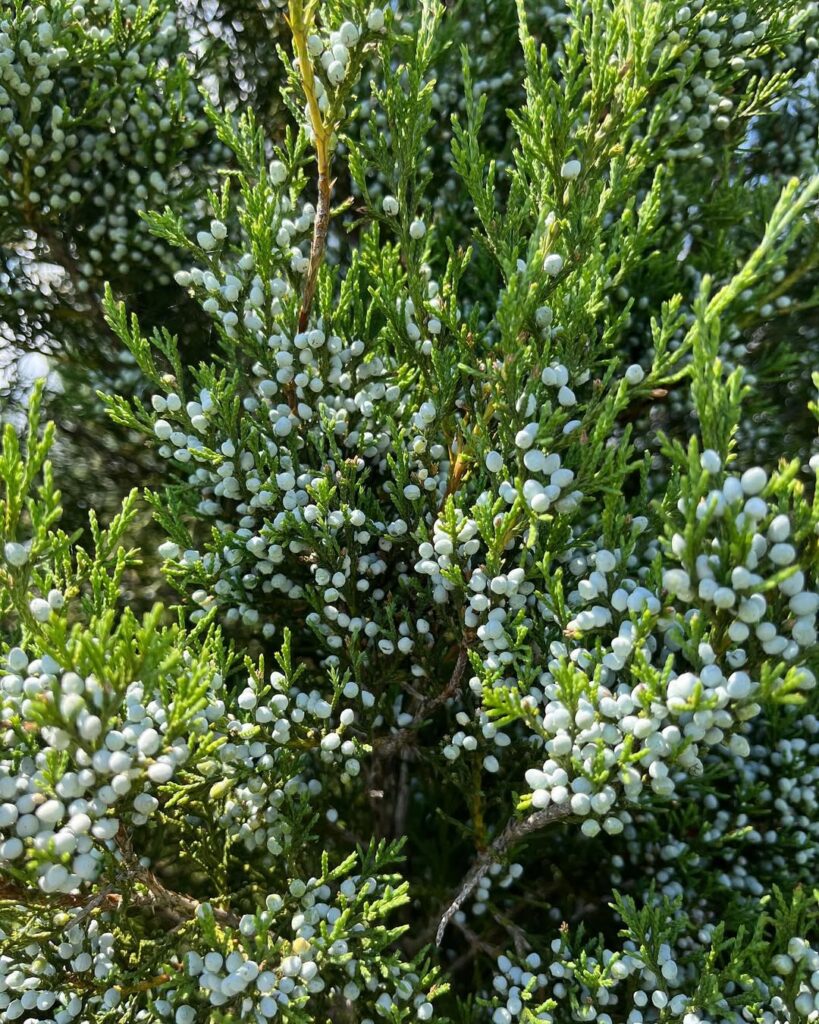
Eastern Red Cedar is a remarkably hardy evergreen native that thrives across Colorado’s challenging climate. This aromatic, pyramidal tree adapts to diverse growing conditions from ridgetops to abandoned fields, making it invaluable for windbreaks and erosion control. While it provides excellent wildlife habitat and year-round shelter, gardeners should be mindful of its potential to spread aggressively in grassland areas and its role as a host for cedar-apple rust. Female trees produce distinctive pale blue fruits that provide food for birds and small mammals throughout winter months.
- Hardiness: USDA zones 2-9; extremely tolerant of temperature extremes, drought, and harsh weather conditions
- Light: Full sun to partial shade; performs best in bright, open locations
- Water: Low to moderate water needs once established; highly drought tolerant due to deep, spreading root system
- Soil: Adaptable to wide range of soil types; native to limestone-derived soils but tolerates poor, rocky, and alkaline conditions
- Fertilizer: No supplemental fertilization needed; thrives in nutrient-poor soils
- Pest/Disease Resistance: Generally pest-free but serves as alternate host for cedar-apple rust; susceptible to bagworms
- Growth Rate: Slow to moderate; typically reaches 30-40 feet at maturity, up to 90 feet under ideal conditions
Plains Cottonwood
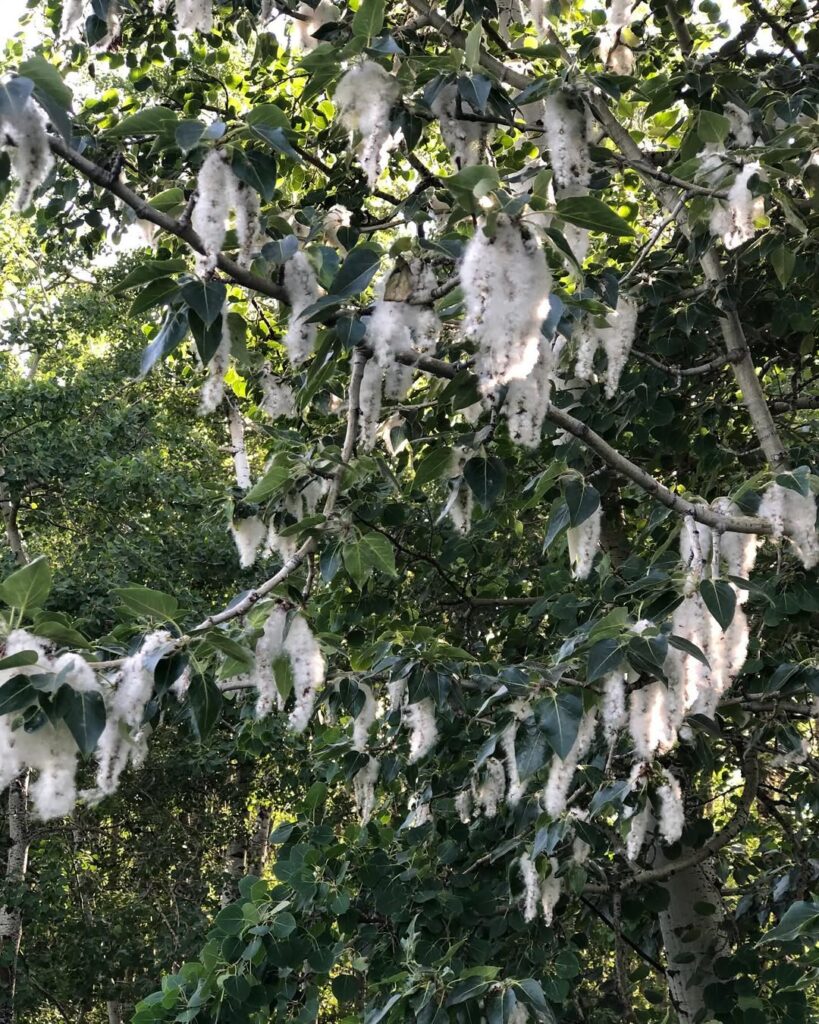
Plains Cottonwood is Colorado’s largest native broadleaf tree, reaching impressive heights up to 100 feet with a broad, spreading canopy. This majestic tree thrives in riparian areas throughout the plains and foothills, producing distinctive triangle-shaped leaves and cotton-like seeds in summer. Female trees release millions of fluffy seeds in June, creating the characteristic “cotton” that gives the tree its name. With brilliant golden fall color and significant ecological importance, Plains Cottonwood serves as a cornerstone species in Colorado’s native landscape. The tree displays a distinctive knobby stem appearance due to enlarged nodes and features grayish-green coloring.
- Hardiness: Zones 3-9, native to Colorado plains and foothills
- Light: Full sun
- Water: High water needs, requires consistent moisture near streams or rivers
- Soil: Moist, well-draining soils along waterways and riparian areas
- Fertilizer: Generally unnecessary when grown in native habitat conditions
- Pest/Disease Resistance: Good resistance when properly sited in appropriate moisture conditions
- Growth Rate: Fast-growing, can live over 300 years with typical lifespan just over 100 years
Bur Oak
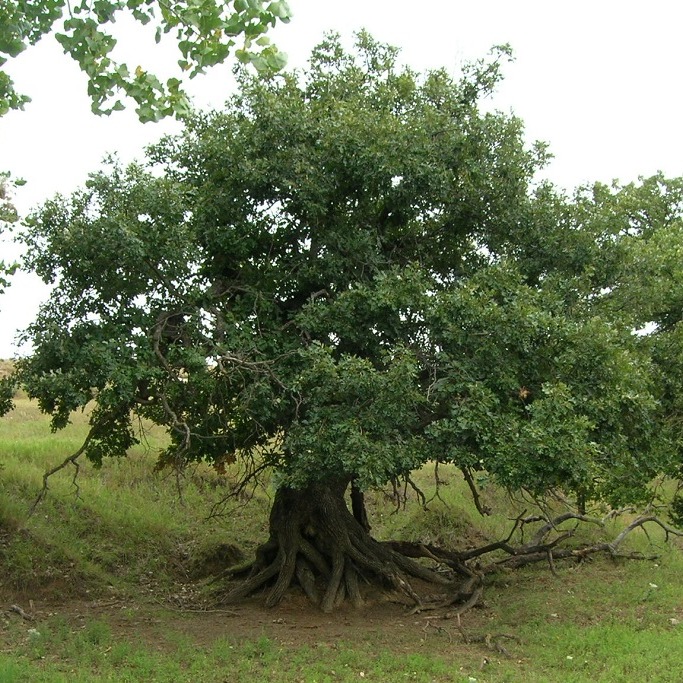
The Bur Oak stands as one of Colorado’s most majestic native trees, perfectly adapted to the plains and prairie environments of eastern Colorado. This remarkable oak species demonstrates exceptional drought tolerance and thrives in xeric landscapes, making it an ideal choice for water-wise gardens and urban plantings. With its massive, spreading canopy reaching 50-70 feet tall and equally wide, the Bur Oak provides substantial shade and cooling benefits while supporting local wildlife through its large, distinctive acorns.
Known for extraordinary longevity of 200-300 years, this slow-growing giant develops from a weakly pyramidal shape into a stately, rounded crown with age. Its thick, deeply furrowed bark offers natural protection from fire and environmental stress, while the glossy, dark green leaves emerge late in spring to avoid frost damage. The species excels in urban environments due to its pollution tolerance and minimal maintenance requirements once established. The tree’s distinctive twigs are almost winged with deep ridges, adding unique textural interest to its architectural form.
- Hardiness: USDA zones 2-8
- Light: Full sun
- Water: Low to moderate; highly drought-tolerant once established
- Soil: Adaptable to various soils; prefers well-draining conditions
- Fertilizer: Minimal requirements; benefits from organic matter
- Pest/Disease Resistance: Excellent resistance to most pests and diseases
- Growth Rate: Slow but steady, reaching full maturity over many decades
Green Ash
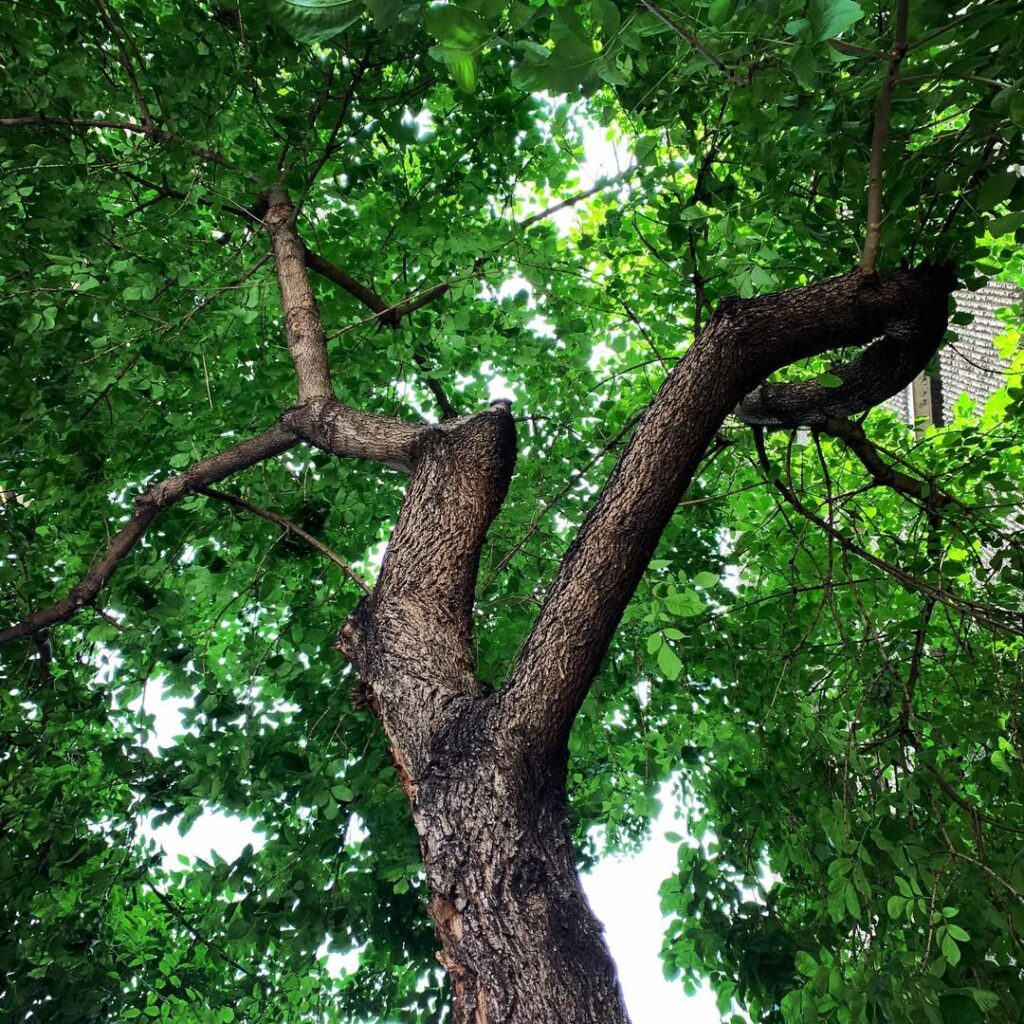
Green Ash is a deciduous native tree well-suited to eastern Colorado’s challenging climate. This hardy species reaches 50-80 feet tall with an equally broad spread, featuring large compound leaves that turn bright yellow in fall. Its rounded, open crown provides excellent shade, making it a popular choice for urban landscapes and parks.
As an early successional species, Green Ash quickly establishes in disturbed areas and thrives in the variable conditions found along Colorado’s plains watercourses. While valued for its rapid growth and adaptability, the species faces significant threats from emerald ash borer and can become invasive through wind-dispersed seeds from female trees. Green Ash trees are easily identified in winter by distinctive X shapes that appear on their bark.
- Hardiness: USDA Zones 3-9
- Light: Full sun; intolerant of deep shade
- Water: Drought tolerant once established; thrives on moist bottomlands and tolerates seasonal flooding
- Soil: Tolerates wide range of soils and pH conditions; adapted to alkaline soils; shallow, wide-spreading root system
- Fertilizer: Low maintenance once established
- Pest/Disease Resistance: Highly susceptible to emerald ash borer; subject to other insect and disease issues
- Growth Rate: Moderate to fast
Hackberry
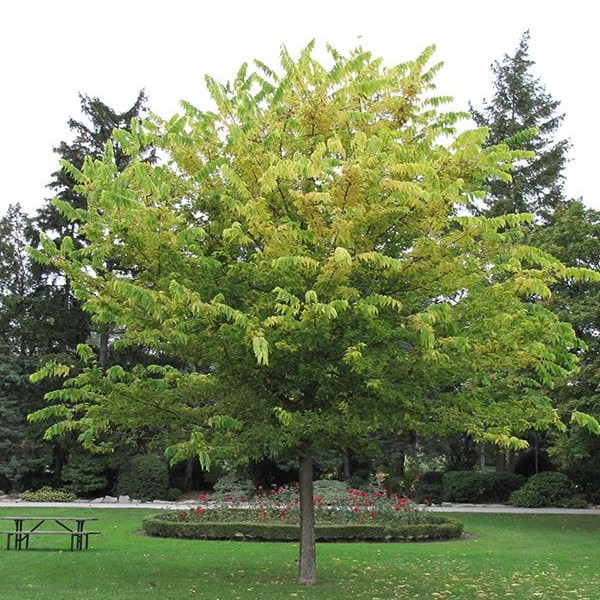
Hackberry is an exceptionally hardy native tree that exemplifies resilience in Colorado’s challenging climate. This medium-sized tree typically reaches 30-50 feet tall with a distinctive rounded crown and characteristic corky, warty bark. Its remarkable drought tolerance and ability to withstand temperature extremes make it an ideal choice for xeriscaping and urban environments.
Despite its somewhat irregular growth habit when young, hackberry develops into an attractive shade tree that provides valuable wildlife habitat. The tree produces small orange-brown to dark-purple drupes that feed numerous bird species, while its deep root system and tolerance for poor soils make it a low-maintenance option for water-wise landscaping initiatives. As the tree matures, it develops a pleasing vase-shaped crown that provides excellent shade coverage.
- Hardiness: USDA zones 3-9, hardy to 7,000 feet elevation
- Light: Full sun to partial shade
- Water: Low to moderate; drought tolerant once established
- Soil: Adaptable to poor soils, compacted conditions, and various soil types
- Fertilizer: Low requirements; thrives without supplemental feeding
- Pest/Disease Resistance: Good resistance; susceptible to harmless hackberry nipplegall and witches’-brooms
- Growth Rate: Slow on poor sites, moderate to fast on fertile, moist soils
Resilient Native Shrubs
Eastern Colorado’s harsh steppe climate demands exceptionally tough vegetation. Native shrubs have evolved remarkable adaptations to survive extreme temperatures, drought, and severe weather while thriving in alkaline soils. These resilient plants can significantly reduce external inputs like watering and fertilizing when properly sited in appropriate locations.
Four-Wing Saltbush
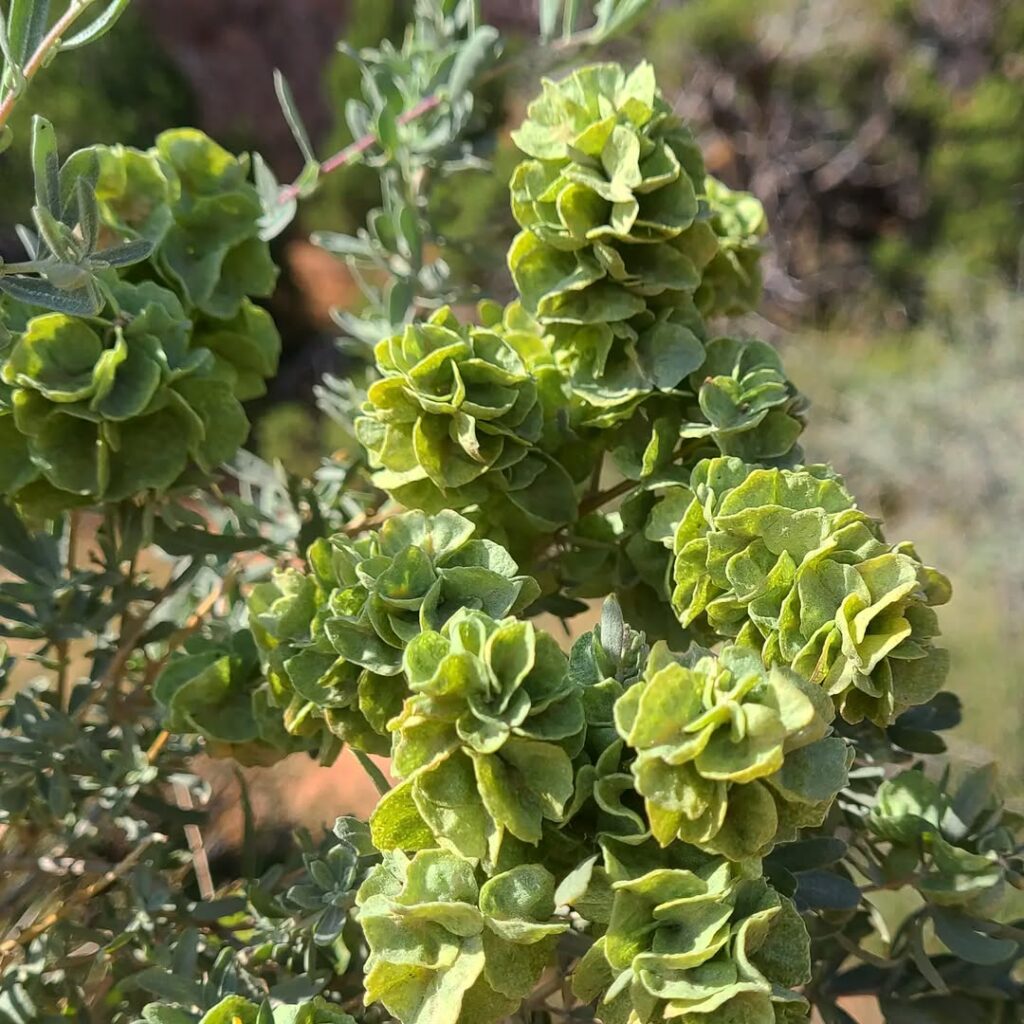
Four-wing saltbush (Atriplex canescens) is a hardy, drought-tolerant shrub that serves as a cornerstone species in eastern Colorado’s semi-arid landscapes. Growing 2-6 feet tall in this region, it’s distinguished by its silvery-gray foliage and distinctive four-winged seeds that cluster like corn flakes. This resilient native demonstrates exceptional adaptability to harsh conditions.
The plant’s deep root system, extending up to 20 feet, enables survival in extreme drought while providing year-round wildlife habitat and livestock forage. Its ability to stabilize disturbed soils makes it invaluable for restoration projects and erosion control in challenging environments. As a member of the Goosefoot family, this species produces small, inconspicuous flowers arranged in clusters that contribute to its understated yet functional presence in native ecosystems.
- Hardiness: Extremely hardy, tolerates extreme temperature ranges and severe drought conditions; thrives in USDA zones typical of eastern Colorado’s semi-arid climate
- Light: Full sun; adapted to high-intensity sunlight and open exposure conditions
- Water: Highly drought-tolerant once established; requires only 8-12 inches annual rainfall; minimal supplemental irrigation needed
- Soil: Thrives in dry, moderately saline, alkaline, or calcareous soils; excellent drainage required; tolerates poor and disturbed soils
- Fertilizer: No fertilization required; adapted to nutrient-poor soils and naturally low-fertility conditions
- Pest/Disease Resistance: Excellent natural resistance; rarely affected by pests or diseases due to harsh native environment adaptations
- Growth Rate: Moderate to fast establishment with high seedling vigor; develops extensive root system quickly for long-term resilience
Three-Leaf Sumac
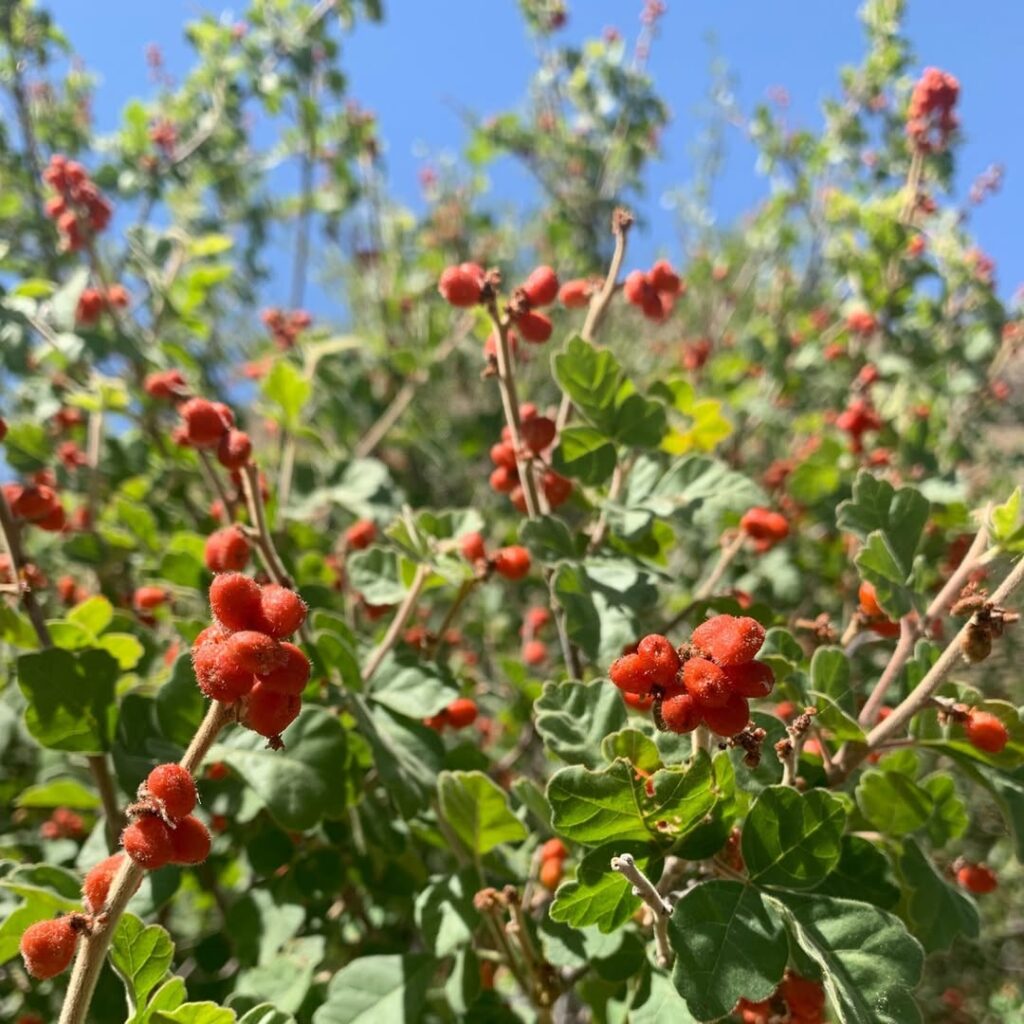
Three-leaf sumac is a resilient native shrub that exemplifies the hardy beauty of Colorado’s indigenous flora. This medium-sized deciduous plant forms dense, thicket-like stands with arching branches, reaching 4-7 feet in height and spreading 4-10 feet wide. Its trifoliate leaves resemble poison ivy but are smaller and emit an aromatic scent when crushed.
The shrub provides exceptional four-season interest, from chartreuse spring blooms that attract pollinators to brilliant fall foliage in shades of yellow, orange, and red. Female plants produce small red berries that feed birds and wildlife, while the dense growth provides valuable nesting habitat. Its extensive root system makes it excellent for erosion control and slope stabilization in xeric landscapes. For successful berry production, you’ll need both male and female plants in your landscape design.
- Hardiness: USDA zones 4-8, tolerates -30°F to 100°F
- Light: Full sun for ideal growth and color display
- Water: Drought-resistant; minimal supplemental watering needed once established
- Soil: Thrives in wide range of soils, including poor or rocky conditions
- Fertilizer: None required; adapted to native soil conditions
- Pest/Disease Resistance: Highly resistant and resilient to most issues
- Growth Rate: Approximately one foot per year after initial establishment
Sand Sagebrush
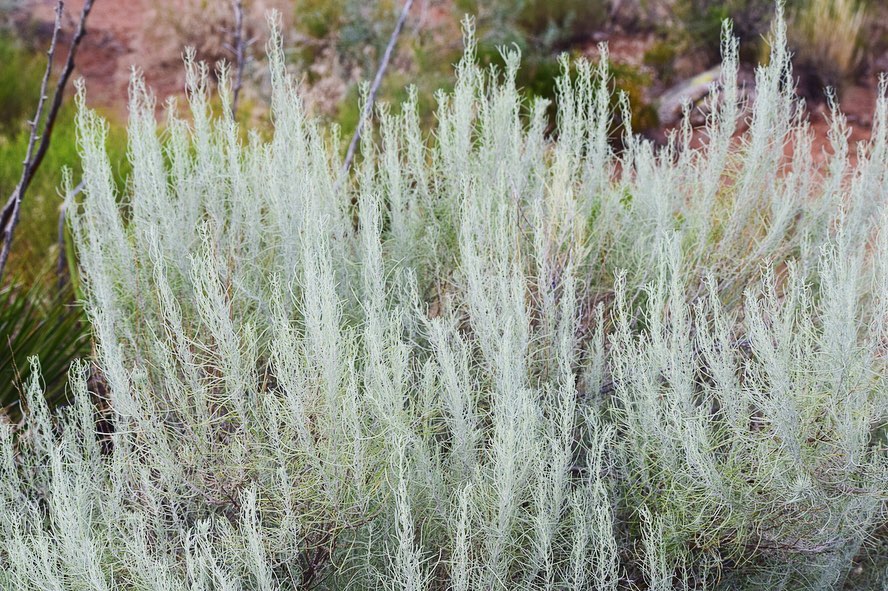
Sand sagebrush is a semi-evergreen shrub native to the sandy soils and dunes of eastern Colorado and the western Great Plains. This compact, rounded shrub typically reaches 3-6 feet in height and width, featuring distinctive feathery, silver-gray foliage with narrow, thread-like leaves. Its inconspicuous yellowish flowers appear in spring and fall.
As a keystone species in sandsage prairies, sand sagebrush plays a vital ecological role in stabilizing sandy soils and preventing erosion. It provides essential habitat for wildlife while supporting the biodiversity of native prairie ecosystems. The species demonstrates remarkable resilience, tolerating drought, extreme temperatures, and fire events while regenerating vigorously after disturbances. The seeds serve as an important food source for sharp-tailed grouse and various other bird species.
- Hardiness: Cold tolerant, withstands High Plains temperature extremes
- Light: Full sun to part shade
- Water: Low water needs, highly drought resistant
- Soil: Thrives in dry, sandy soils; native to sandy soil conditions
- Fertilizer: Not typically required; adapted to nutrient-poor soils
- Pest/Disease Resistance: Generally resistant; well-adapted native species
- Growth Rate: Moderate; self-sows readily in suitable conditions
Rabbitbrush (Ericameria Nauseosa)
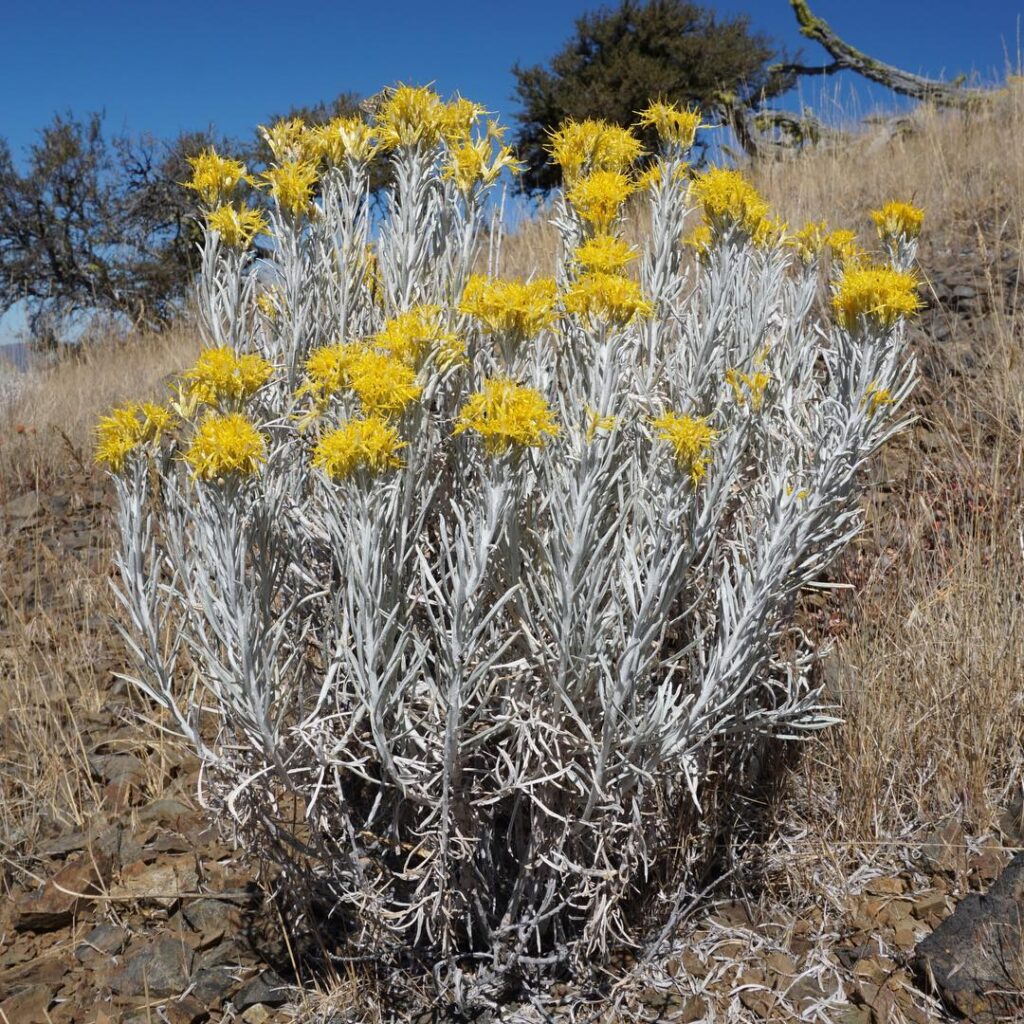
Rabbitbrush is a hardy, multi-branched deciduous shrub native to western North America’s arid regions, including eastern Colorado. Growing 4-7 feet tall with silvery-gray foliage and a dense, dome-shaped crown, this resilient plant thrives in disturbed soils and open areas alongside sagebrush. From late summer through fall, it produces abundant clusters of bright golden-yellow flowers that provide essential nectar for pollinators.
This drought-tolerant shrub excels in xeriscaping and restoration projects, offering year-round landscape interest with minimal maintenance. Its ability to reproduce through both seeds and root sprouting makes it valuable for soil stabilization and erosion control, while its non-invasive nature guarantees it won’t overwhelm garden spaces. The plant can be easily grown from seed and may naturally self-seed in suitable conditions.
- Hardiness: USDA zones 4-9, extremely cold and wind resistant
- Light: Full sun required for ideal growth and flowering
- Water: Very low water needs; drought-tolerant once established, avoid excess summer irrigation
- Soil: Well-draining soils preferred; tolerates poor, sandy, gravelly, clay, and rocky substrates
- Fertilizer: None required; thrives in nutrient-poor soils
- Pest/Disease Resistance: Excellent resistance to pests and diseases
- Growth Rate: Moderate; benefits from annual shearing for denser growth
Wild Four O’Clock
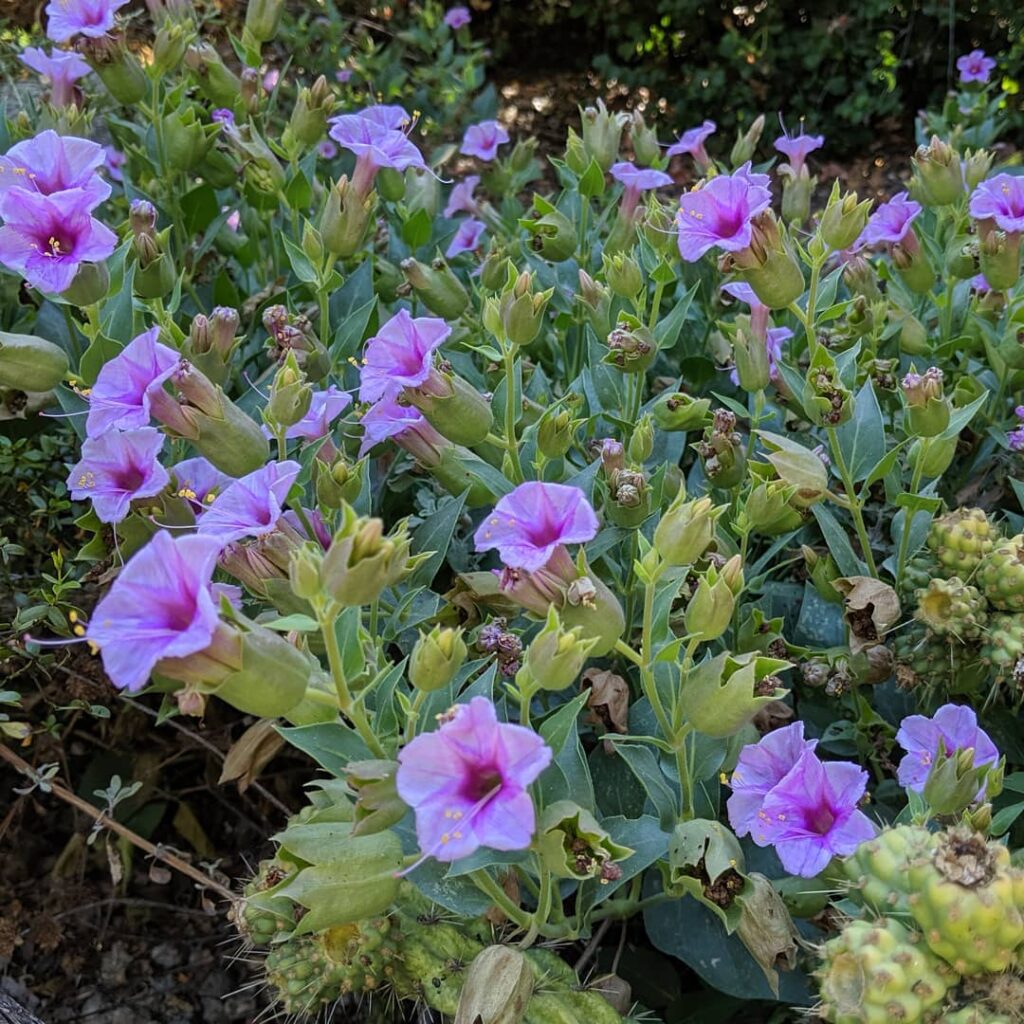
Wild Four O’Clock is a drought-tolerant perennial shrub that brings vibrant magenta blooms to eastern Colorado landscapes from spring through fall. This resilient native develops a substantial tuberous taproot system that anchors the 2-4 foot rounded plant while providing exceptional drought tolerance. The fragrant, trumpet-shaped flowers open in late afternoon, attracting moths and other evening pollinators.
Beyond its ornamental value, Wild Four O’Clock serves important ecological functions as a larval host for sphinx moths and nectar source for native pollinators. Its deer-resistant nature and soil-stabilizing root system make it valuable for restoration projects and low-maintenance xeriscaping in eastern Colorado’s semi-arid climate. The plant thrives in disturbed areas where other species struggle to establish.
- Hardiness: Zones 4-8, tolerates extreme temperature fluctuations and drought
- Light: Full sun to partial shade
- Water: Low water needs once established; drought tolerant, avoid overwatering
- Soil: Well-drained sandy or rocky soils; tolerates poor, alkaline conditions
- Fertilizer: None required; excessive nutrients may reduce flowering
- Pest/Disease Resistance: Excellent resistance to local pests and diseases
- Growth Rate: Moderate to slow establishment, vigorous once mature taproot develops
Selecting the Right Native Plants for Your Garden
Creating a thriving native plant garden in eastern Colorado starts with understanding your specific site conditions and matching them to plants that’ll actually survive your challenging climate. Your soil type—whether clay or sandy loam—directly influences which species will flourish, so test yours first. With only 12-18 inches of annual precipitation, drought-tolerant varieties like Blue Grama and Rocky Mountain Penstemon are essential. Consider wind exposure when selecting plants; strong-stemmed options like Prairie Coneflower handle desiccation better. Mix wildflowers, grasses, and shrubs for habitat diversity. Spring and fall planting techniques yield better establishment than summer attempts. Native plants provide critical support for local wildlife that have evolved alongside these species over thousands of years.
Frequently Asked Questions
When Is the Best Time to Plant Native Species in Eastern Colorado?
Like nature’s own calendar, you’ll find the best planting season runs from October through spring. Climate considerations favor winter-to-spring sowing when cold breaks dormancy and moisture supports establishment before summer’s harsh grip.
How Much Water Do Newly Planted Native Plants Need During Establishment?
During the establishment period, you’ll need to water newly planted natives vigilantly for three weeks, then throughout their first summer season. Water requirements include weekly amounts equal to pot size or ten gallons per trunk inch diameter.
Where Can I Purchase Native Plant Seeds or Seedlings Locally?
You’ll find absolutely incredible selections at local nurseries like Harlequin’s Gardens and Rick’s Garden Center! Don’t miss the Colorado Native Plant Society’s seed exchanges and Denver Botanic Gardens’ seasonal sales for amazing native varieties.
Do Native Plants Require Special Soil Amendments or Fertilizers?
You don’t need special soil amendments or fertilizers for most native plants. They’re adapted to local conditions and thrive in unamended soils. Check soil pH first, then add minimal organic matter only if absolutely necessary.
How Do I Protect Young Native Plants From Wildlife Damage?
You’ll want to install physical barriers like wire cages or tree tubes around seedlings. Consider various fencing options based on local wildlife species. You can also apply wildlife repellents regularly to deter browsing animals.
